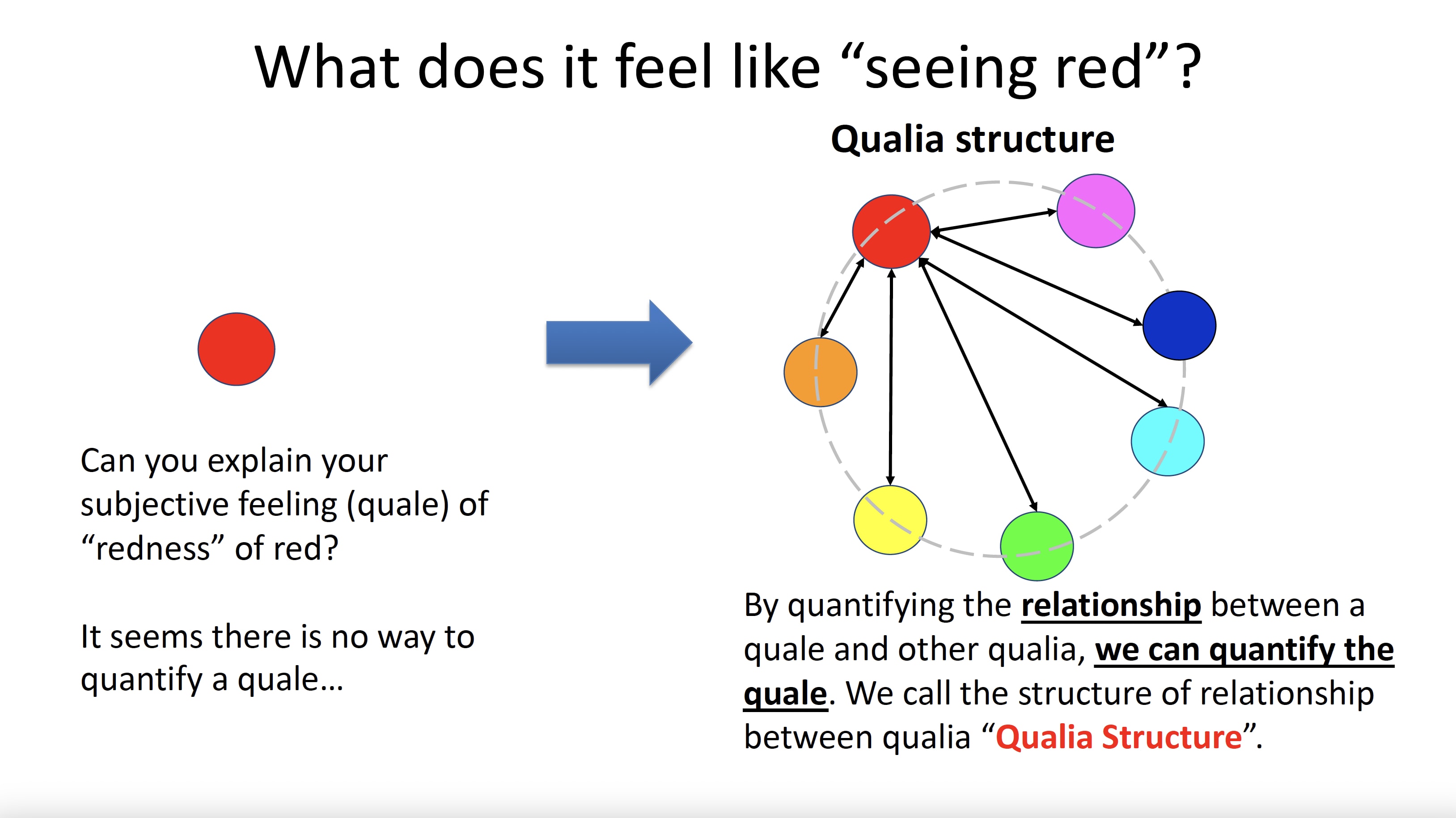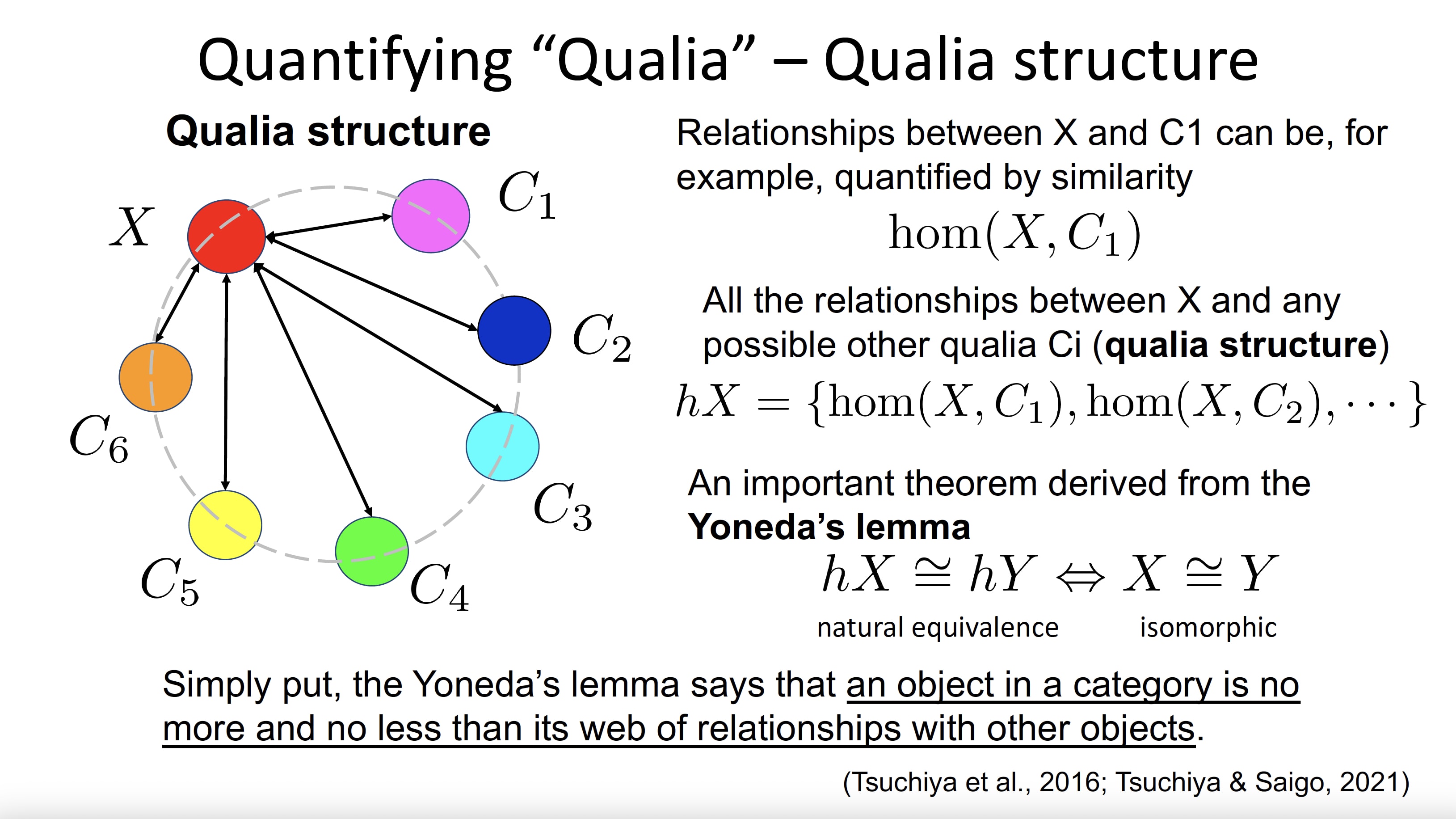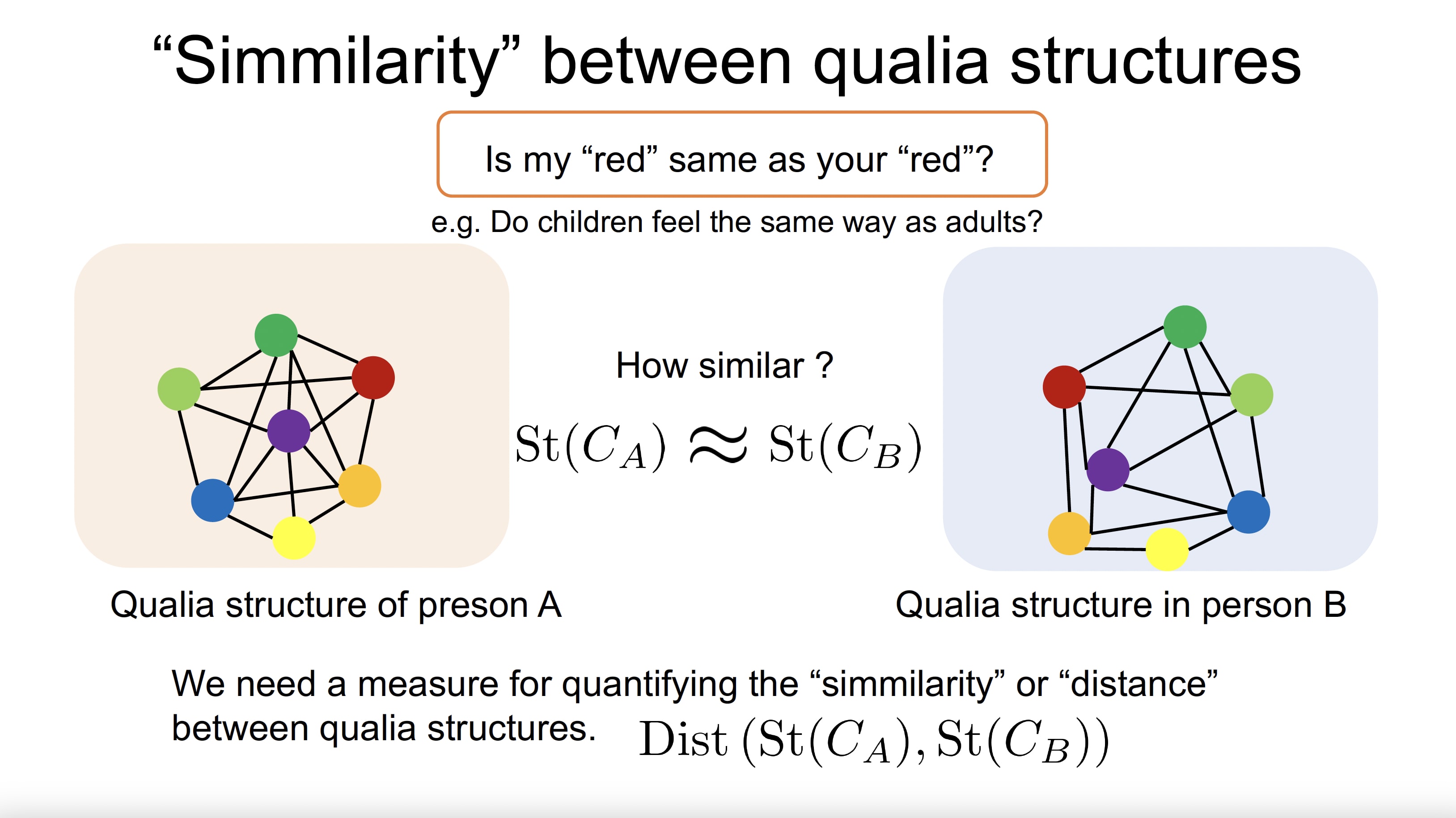Penned by Yusuke Hayashi, an independent researcher hailing from Japan, this article bears no affiliation to the authors whose scholarly works are referenced herein. Demonstrating intellectual autonomy, the analysis presented is unequivocally distinct from the cited publications.Have you ever wondered if the "red" you perceive is the same "red" someone else experiences? A recent study explores this question using a distance measure called the Gromov-Wasserstein distance (GWD).
Is my “red” your “red”?: Unsupervised alignment of qualia structures via optimal transport[1]
Paper (Preprint by Kawakita et al. published in PsyArXiv): https://psyarxiv.com/h3pqm
Slide (Presentation by Masafumi Oizumi at Optimal Transport Workshop 2023): https://drive.google.com/file/d/1Z5QTxayqJkmYyOgirrbJRRflY8HOy8ox/view?usp=sharing
In the paper "Is my "red" your "red"? : Unsupervised Alignment of Qualia Structures by Optimal Transport" (Kawakita et al., 2022) proposes a new approach to assessing the similarity of sensory experiences between individuals. This approach, based on GWD and optimal transport, allows for the alignment of qualia structures without assuming a correspondence between individual experiences. As a result, it provides a quantitative means of comparing the similarity of qualia structures between individuals.



By applying this method, it is possible to compare the similarity of subjective experiences, or qualia structures, between individuals using GWD, a distance measure employed in machine learning research. While this study compares sensory experiences between humans, the same approach could be used to compare the sensory experiences of humans and the advanced AI model, GPT-4. We are now ready to revisit the question posed in the title:
Is "red" for GPT-4 the same as for you?
If asked whether large language models (LLMs) like GPT-4 possess consciousness, the likely answer would be "probably not." However, the method proposed here provides a way to determine whether such models share the same qualia structure as humans.
Consciousness and qualia are closely related. Consciousness is the state of being aware of, perceiving, and thinking about one's surroundings, thoughts, and feelings. Qualia, on the other hand, are subjective experiences and sensations that accompany consciousness, such as the taste of chocolate, the sound of a musical instrument, or the sensation of pain.
Qualia are an essential part of conscious experience, and their relationship to consciousness is of paramount importance. Without qualia, our experience of consciousness would lack a rich, subjective texture and would not be unique and personal. In other words, qualia give our experience of consciousness its unique character and enable us to understand the world around us.
One of the central debates in the philosophy of mind revolves around the nature of qualia and their relation to consciousness. Some philosophers argue that qualia are difficult to study and understand because they cannot be reduced to physical or functional descriptions. Others argue that advances in neuroscience and cognitive science may allow qualia to be explained within a naturalistic framework. The aforementioned studies shed new light on the long-standing controversy surrounding the nature of qualia and its relationship to consciousness.
Recently, Dr. Geoffrey Hinton, one of the pioneers of the deep learning model, resigned from Google, advocating the potential dangers of making AI smarter than humans. In LessWrong, there is a lot of discussion about the safety of AI and the integrity of AI. Throughout this article, I would like to pose the following question to the reader:
If deep learning models acquire consciousness in the near future, can we consider them as alignment targets?
- ^
G. Kawakita, A. Zeleznikow-Johnston, K. Takeda, N. Tsuchiya and M. Oizumi, Is my "red" your "red"?: Unsupervised alignment of qualia structures via optimal transport. PsyArXiv https://doi.org/10.31234/osf.io/h3pqm (2023).